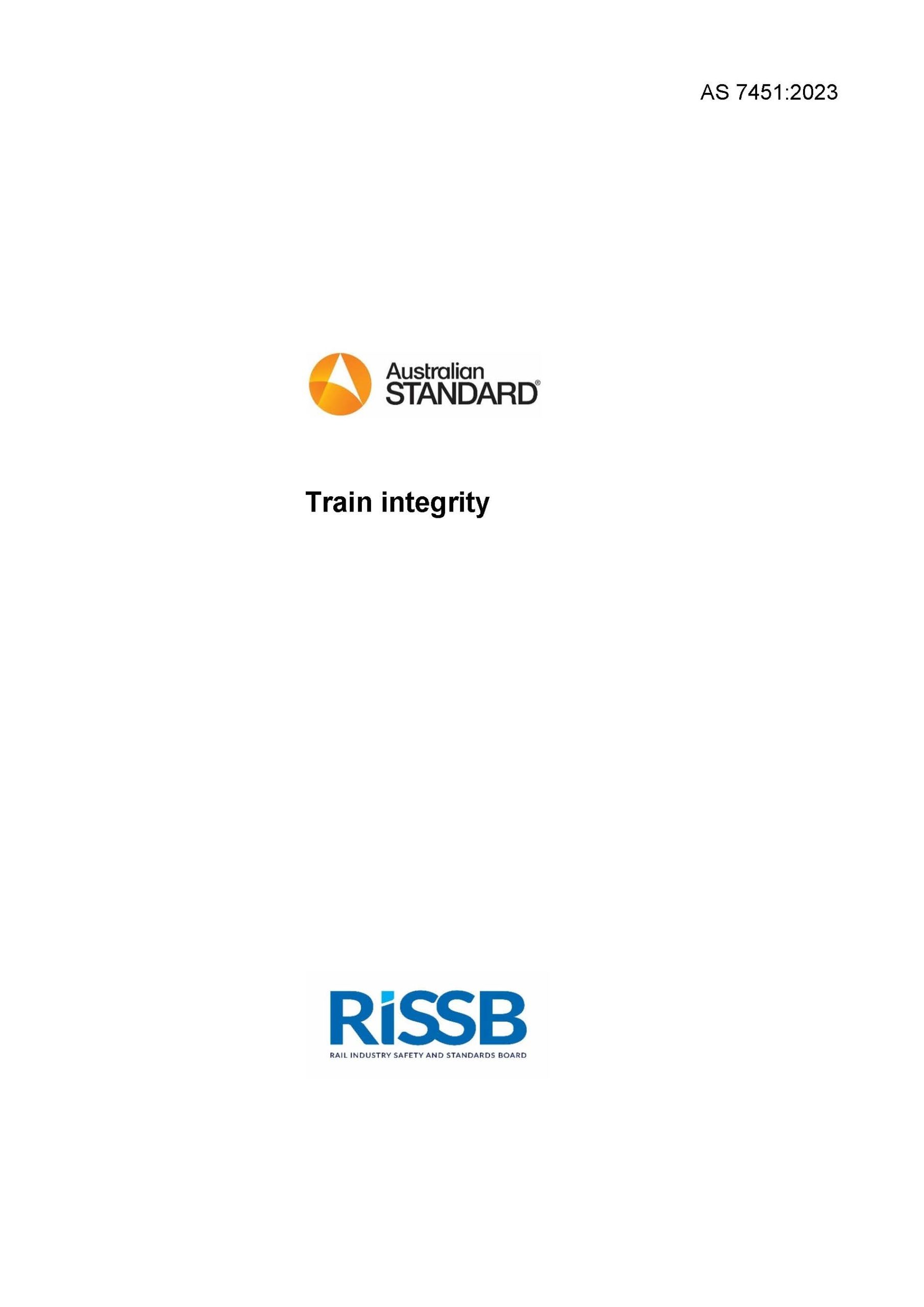The objective of this Standard is to describe train integrity requirements for Australian operations and includes minimum requirements for train inspection and carding requirements for vehicles requiring repair.
Frequently asked questions
The objective of this Standard is to describe train integrity requirements for Australian operations and includes minimum requirements for train inspection and carding requirements for vehicles requiring repair.
The key points of this product are as follows:
- It outlines train integrity requirements specifically for Australian RTOs.
- It is targeted at Rolling Stock Operators and covers:
- Train inspection requirements
- Movement protection methodologies
- Recommended inspection regimes.
- The goal of this Standard is to enhance harmonisation within the Australian railway industry by establishing common approaches to train integrity tests.
This Standard was previously part of the AS 7503 Train Identification suite, but following this review, it has been established as a standalone Standard for easier use and identification. Key changes include revisions to better align with current industry practices, alignment with current Standards Australia requirements, and general updates where necessary.
This product enhances safety and interoperability by providing a national approach to train integrity. It simplifies training and documentation for train crews and yard staff, reducing the risk of errors that can arise from using different systems for different operators. Additionally, it eliminates the need for trains to be retested when transitioning between systems and simplifies marshalling requirements, thereby streamlining operations and enhancing overall safety.
The use of this Standard helps manage key risks associated with rail operations, including the unauthorized movement of rail vehicles, the movement of damaged rail vehicles, and the movement of defective rail vehicles. By addressing these risks, the Standard ensures safer and more reliable rail operations.
To implement this Standard within your organisation, it is recommended to follow this approach:
- Review AS 7451 in comparison to your internal standards, processes, and instructions, such as brake testing procedures, management of defective vehicles, and yard working instructions.
- Identify any common areas and variances.
- Where there is commonality, no further action is required.
- For any variances, assess whether AS 7451 offers an improved safety and/or interoperability outcome, measured against your organisation’s risk profile and the SFAIRP (So Far As Is Reasonably Practicable) principle.
- If AS 7451 provides a better outcome, amend your organisation’s standards, processes, and instructions to align with AS 7451.
- Ensure any amendments are made in accordance with your organisation’s change management process.
Receive Updates
Click the button below to register for product updates
Register Now



